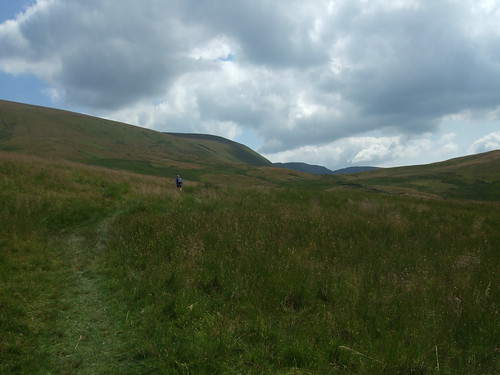This post marks the first of a new series I’ll be calling The Other 90% in reference to the common saying that exercise is 10% physical and 90% mental.
With the clock ticking away the hours and minutes and there only being five and a half weeks left until the UTLD100, I’ve decided to revisit last years performance and start some mental preparation. After reading my blogpost about what went wrong, I decided to look at the results and my timings. I noticed that the section from Howtown (CP9) to Mardale Head (CP10), where I pulled out, took me 4h17m to complete. The section is a toughie, no doubt about it; at 9.4 miles it’s the second longest section and it’s got the highest ascent with 765m – all on the big climb up Wether Hill. It took me 4 hours and 17 minutes to complete. Ouch!
Out of curiosity, I checked how long it took the 100th place finisher to complete that section (I chose 100th because I arrived at Mardale Head in 101st place). He did it in 3h28m. The chap who I arrived at Dockray with, Philip, completed it in 3h29m, Andy Cole (who I bumped into at Dalemain) did it in 3h35m and Mick Wren completed it in 3h31m. Compared to all these finishers, I took 45-50 minutes longer on the Mardale section. That got me thinking.
I was aware that there were a large number of dropouts at Mardale – 16 to be precise – and I wondered if there was any correlation between the dropouts and how long it took them to complete that section. The break down went like this:
| Time | Total | DNF @ CP10 | DNF by CP14 | Finished |
| < 3:30 | 64 | 0 | 0 | 64 |
| 3:30 – 4:00 | 49 | 3 | 7 | 39 |
| > 4:00 | 33 | 13 | 7 | 13 |
So, roughly, 80% of the 16 people who dropped out at Mardale Head took over 4 hours to complete that section and only 40% of people who took over 4 hours went on to finish (compare to 80% who took between 3h30 and 4h00 and 100% of who took less than 3h30.)

So does this mean that if you take over 4 hours to plod from Howtown to Mardale that you’re – pardon the vernacular – screwed? I don’t think so – but this is a good chance for another table and even more numbers!
| 2008 | 2009 | 2010 | 2011 | |
| Seathwaite | – | 5 | 1 | 1 |
| Boot | – | 4 | 2 | 2 |
| Wasdale | – | 9 | 4 | 6 |
| Buttermere | 1 | 7 | 3 | 18 |
| Braithwaite | – | 10 | 4 | 9 |
| Blencathra | – | – | 1 | 1 |
| Dockray | – | 3 | 6 | 7 |
| Dalemain | 12 | 13 | 15 | 21 |
| Howtown | 5 | – | 7 | 13 |
| Mardale | 1 | 13 | 2 | 16 |
| Kentmere | – | 2 | 3 | 4 |
| Ambleside | – | – | 4 | 7 |
| Langdale | – | – | 1 | 1 |
| Tilberthwaite | – | – | – | 2 |
| Finishers | 11 (37%) | 46 (41%) | 70 (57%) | 116 (52%) |
| Dropouts | 19 | 66 | 53 | 108 |

Great post Tom! Really interesting, and as you say it’s perhaps not surprising that most people pull out either straight after a hard slog or when there’s the promise of a nice warm meal and a sit down. I like to remind myself that it should hurt, and if it wasn’t easy then everyone would do it. What’s your usual way of dealing with the mental aspect of ultrarunning?
Thanks Sam. I don’t think I’m experienced enough to have a “usual” way of dealing with the mental aspect but I worked out some for my first ultra a couple of years ago which seemed to work then. Hmmm… I can feel another blog post coming on.